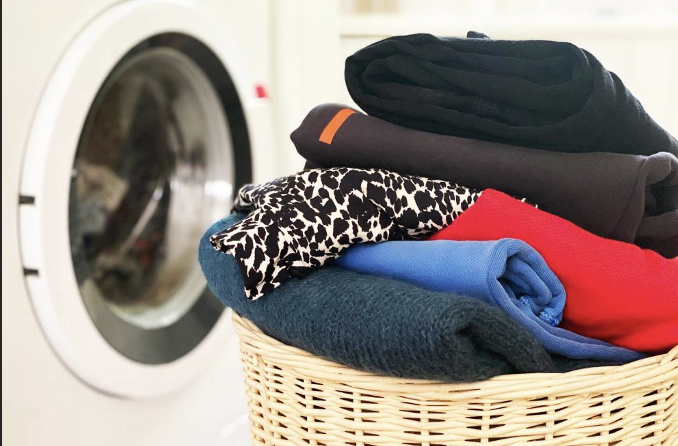Tips to Wash Brand New Clothes

New clothing always looks so gorgeous. They have that almost-cracking quality of newness, cleanliness, and unused ness. Washing them may seem wasteful. However, those seemingly clean clothes may be covered in various contaminants, toxins, and dirt.
Many customers may have handled, and touched clothing bought off the rack. So washing them makes sense. What about clothing purchased online, though? These garments may occasionally receive care to keep them in the best possible condition while they are stored. Additionally, preservatives like formaldehyde may be coated on these brand-new garments. Therefore, it is essential to wash them as well.
Get clean, new clothing while maintaining its crisp, new freshness by following the easy washing clothes tips below.
Washing Clothes Tips:
Remove unwanted objects:
Start by removing all of the new items of clothing’s extra labels, stickers, and accessories. Bar codes, price tags, size markers, and other identifying marks you wouldn’t wash should be set aside. Wait to discard them! If your garments don’t fit, are broken, or aren’t your style, you might need these things to return them later.
As per laundry services, ensure the clothing has all necessary tags, such as washing labels. Generally speaking, labels stitched into an article of clothing are not supposed to be removed.
2. Read the washing label.
Carefully read the washing instructions. Almost all clothing comes with detailed instructions on how to wash it to get the best results. Following these guidelines can stop clothes from losing shape, size, colour, and feel. These tags are generally located on the side of t-shirts, sweaters, and shirts, while they are mainly found on the rear of the waist of shorts and pants. You can learn everything you need about cleaning garments from these washing labels. However, before trying to understand washing tags, it is essential to know how to read them.
3. Avoid mixing different colours
There is no worse feeling in the world of laundry than taking out a favourite item of clothes only to find that it has colour from another item. New clothing in the washer is far more likely to bleed, particularly at high temperatures. It may change the colour of more recent clothing and stain other garments.
The best way to avoid this issue is to keep colours separate.
For example, whites and darks shouldn’t be combined, and vice versa. You’ll need to think in terms of a range when it comes to particular colours. So you can wash your lime green top with your kelly green jeans.
4. Choose the right detergent.
Another essential step for washing new clothes properly is choosing the right detergent. Laundry detergent usually comes in three basic forms: liquid, powder, and pod. The liquid choice has the most fantastic diversity because it is widely used. Due to its capacity to spotless garments by “sinking” into it, powder detergents are also widely used. Use a mild and colour-preserving detergent when washing new clothing.
5. Select the proper wash settings.
Here’s where things get a little tricker. With all the available settings, a washing machine can feel mildly like flying a spaceship. When washing clothes, you want to balance cleaning and preservation. You want to clean your clothes thoroughly to remove common stains, bacteria, or other potential impurities while still protecting the integrity of the clothes. According to laundry services,you should always stick to the instructions on the laundry label, as these settings have been selected to clean that particular item optimally. To avoid overwashing or overheating, keep to mild temperatures and average spin cycles if that is impossible.
Conclusion:
Do you want to know more about improving your laundry cycles? For expert advice on getting the most out of this weekly task, visit Hello Laundry. Our professionals at Hello Laundry have provided the best laundry services in London for decades.
Passionate Writer, Blogger and Amazon Affiliate Expert since 2014.




























